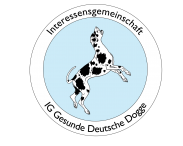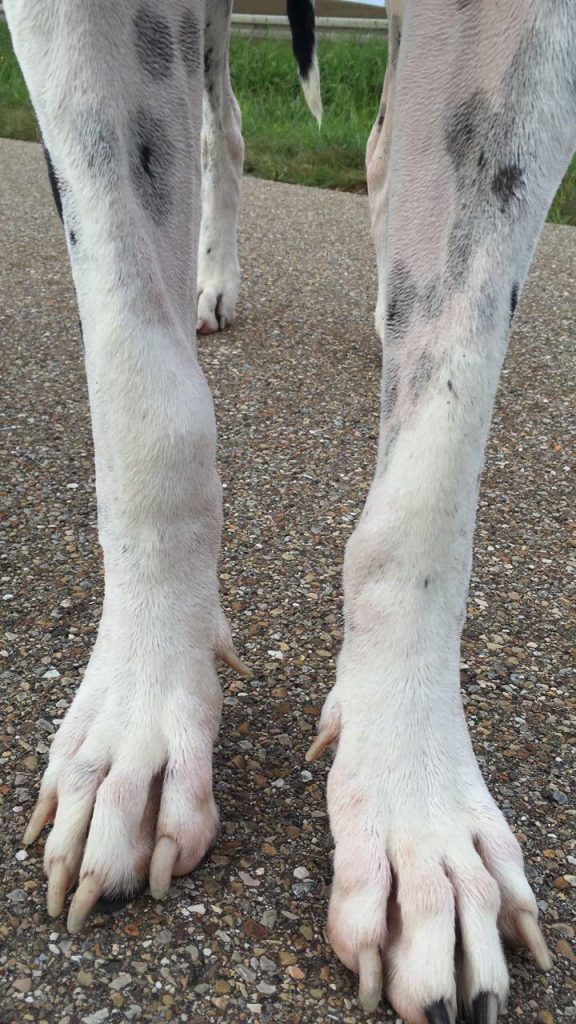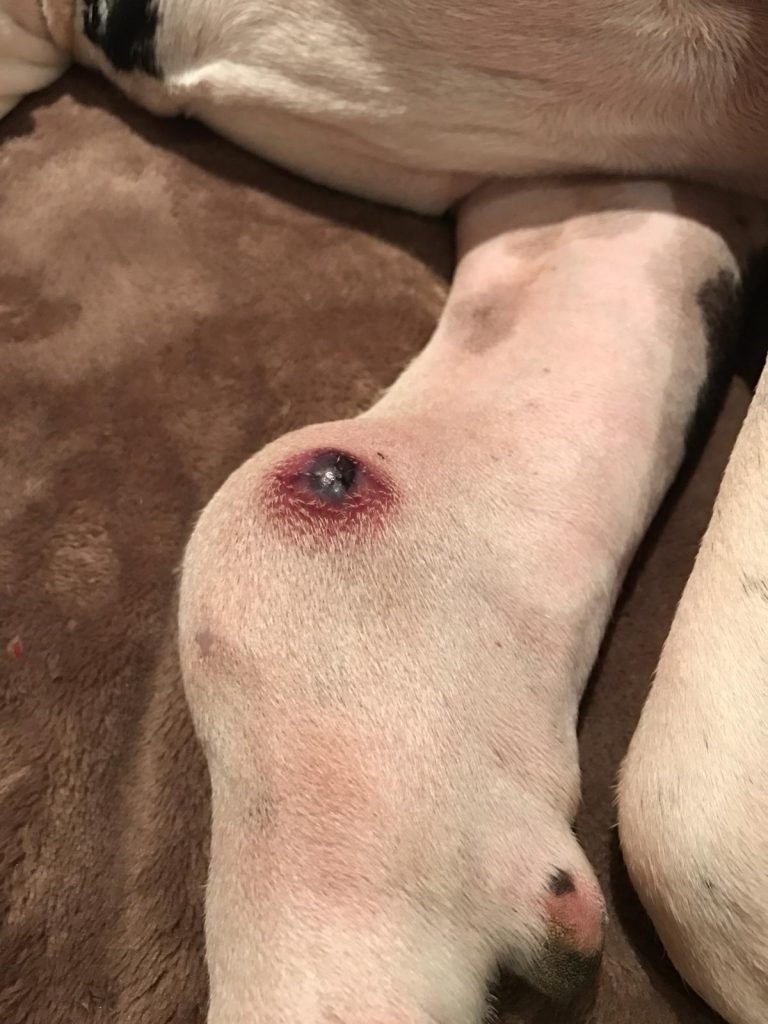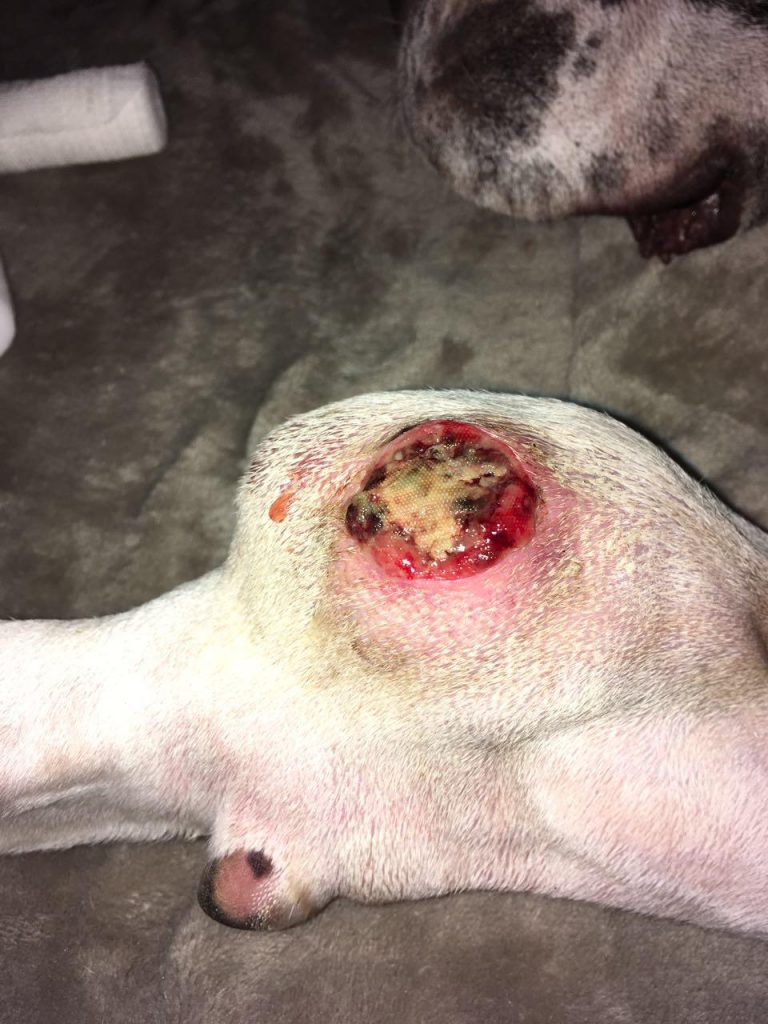Frequency and causes
The osteosarcoma (OS, bone cancer) is a very aggressive kind of cancer which cannot be cured, since in most cases the tumor has already metastasized – which means spread – in the body of the dog. It is one of the most frequent causes of death in great danes with about 10% (in blue and black/harle) and up to almost 25% (in fawn/brindle) of affected dogs (in Continental Europe). This uneven distribution in the different colour groups of the great dane – which are almost own breeds because they are separated from each other – and accumulated cases in certain families/breeding lines point to a high heritability of this disease. By now several studies found numerous genetic loci and variations which are responsible for the development of bone cancer (see below). The mode of inheritance is – like the one of DCM – polygenetic, which means that many genes are needed to cause the disease.
“The osteosarcoma (…) is found mostly in big and giant dog breeds. Dogs in medium and old age are more likely to be affected. The average age of onset is about 7 years, although also tumors can be found in young dogs of 18-24 months.”
Kleintieronkologie, Martin Kessler, 2013, Thieme Verlag
The tumor is located in 95% of big dog breeds in the appendiculary skeleton, which means in the extremities. Only 5% of the tumors can be found on the axial skeleton, which means the jaw, skull, rips and the vertebra. The front limbs are more often affected than the hind limbs following the principle “far from the elbow joint and close to the knee joint”. The following picture illustrates the most frequent locations of OS in great danes.
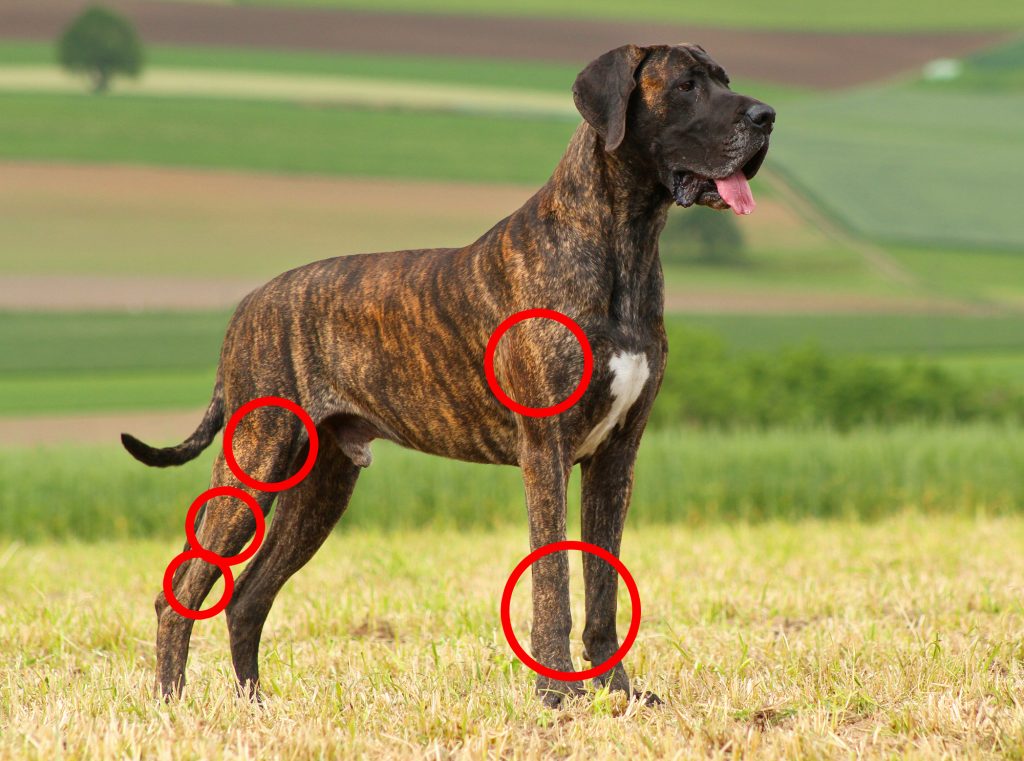
Besides size and weight other risk factors that might cause bone cancer are the sex (in some studies males are more often affected than females) and (early) neutering (2-4 times higher risk). Since OS develop in the metaphysis (growth disks) of the long bones it was considered for a long time that micro fractures – which means minimal ruptures and traumas of the bone – cause the development of the tumor. But new studies disprove this thesis, as there cannot be found increased micro traumata or bone remodelling in the areas where OS frequently appears.
What happens when a dog has bone cancer and how can you recognize it?
Osteosarcomas emerge in the marrow of the bone. They destroy the cortical bone, which is the sustaining outer shell of the bone. As a reaction bone material grows to stabilize it again. This causes a swelling, which is one of the outer symptoms the dog owner can recognize. As OS appear mostly in the long bones the dog will also show a more or less distinct lameness. Since there are many causes for limping or a swelling the affected body part has to be X-rayed to diagnose OS. Also an MRT or CT is a mean for an imaging diagnosis. To be absolutely sure a biopsy should be performed, which means affected tissue is taken and examinated in a laboratory.
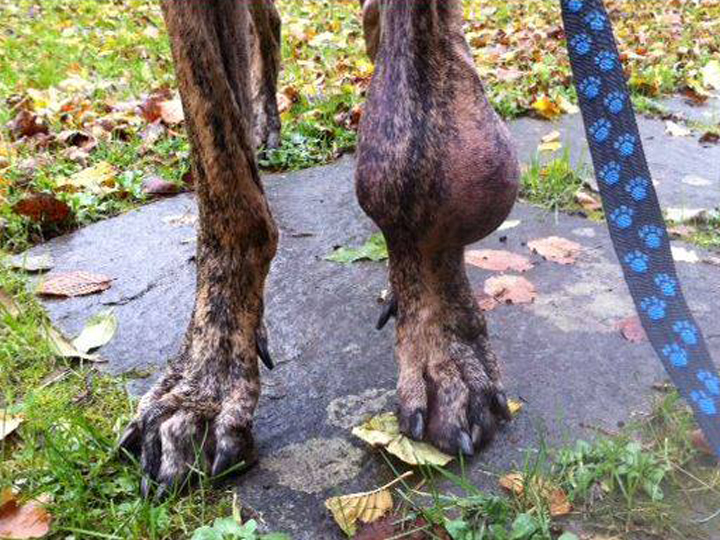
If an OS is diagnosed the whole body should be X-rayed to see if the tumor has already spread. This is very often the case with bone cancer, mostly metastasis can be found in the lung.
Although only in 5-10% of dogs lung- or bone metastasis can be detected by X-ray at the first time they visit the clinic, more than 90% of patiens develop metastasis after one year, if only the affected limb had been amputated. So one has to assume that there are always micro metastasis in the body already at the time of diagnosis.
Kleintieronkologie, Martin Kessler, 2013, Thieme Verlag
For the dog owner this means, that bone cancer cannot be cured. Even amputation of the affected limb and chemo- and radiotherapy will only delay the death of the beloved pet for a few months. So the owner has to weigh up very carefully if an amputation makes sense, depending on the age of the dog, already existing other diseases etc. In the end the bone cancer can only be treated palliatively, which means that with the help of pain medication the last weeks or months of the dog’s life are possibly free of suffering. In most cases the tumor grows rapidly and because of the dissolution of the bone it will break or burst after a while which is very painful for the dog even when it gets medication. So the owner will have to deliver his dog one day. Very often the dog is still physically and mentally fit at that moment, because the metastasis in the body will only cause symptoms like malaise, loss of appetite and performance problems in a late stage of the disease. This makes euthanasia even harder for the owner.
Experience report
My great dane Franzi developed a small bump at the left front leg in September 2017, at the age of 4. I went with her to the animal hospital and they performed a biopsy and X-ray. The diagnosis was osteosarcoma at the beginning stage.
After talking to our vet we decided that an amputation is not possible because Franzi only had a stomach torsion with 6 liters of own blood transfusion and a bleeding of the milt 6 weeks prior to the OS diagnosis. So we started a therapy with Onsior 40 mg and went with her to the oncological department of the veterinary university in Munich (LMU).
At the 10th of October 2017 we finally had the appointment in Munich. There we decided to perform two treatments: 1. a nerve block (similar to peridural anesthesia) and 2. two radiotherapies with one week distance (against the pain).
The doctors told us carefully but clearly that we can take away most of the pain but nevermind what we would do we could only delay the progression of the OS, not stop it. The following treatments went well except for a 24 hour lameness of the leg after the nerve block. But this was told us could happen as a side effect. Still we were glad in the end that we had used this treatment.
She felt quite well afterwards until the 27.12.2017. Then she suddenly developed over night a bubble filled with blood on the tumor. Our vet advised us to tape the wound. Two days later the tumor opened up and blood, pus and wound secretion extravasated.
But still Franzi seemed to feel well. She was eating, playing and having walks with us (without limbing). Except for the daily changes of bandages we could have a normal every day life. But we realized that the nerve block started to loose its effect and so we gave her Novalgin (at the beginning 2-2-2 and in the end 4-4-4). Additionally she got Omeprazol to protect her stomach.
We discontinued Onsior in December because she could not stand it anymore due to the long period of medication. From then on the tumor grew faster and faster and the wound didn’t heal anymore. The tumor started to become brown, almost black. By purging and bandaging the wound we could provide her a few more weeks.
Starting from January 2018 she ate less, still wanted to go out for walks but was in pain more often. Which was terrible to see because except for her leg she was a normal and happy young dog. We gave her Tramadol and PhenPred which took away the pain and she had more appetite. But the tumor was growing and growing, nevermind what we did.
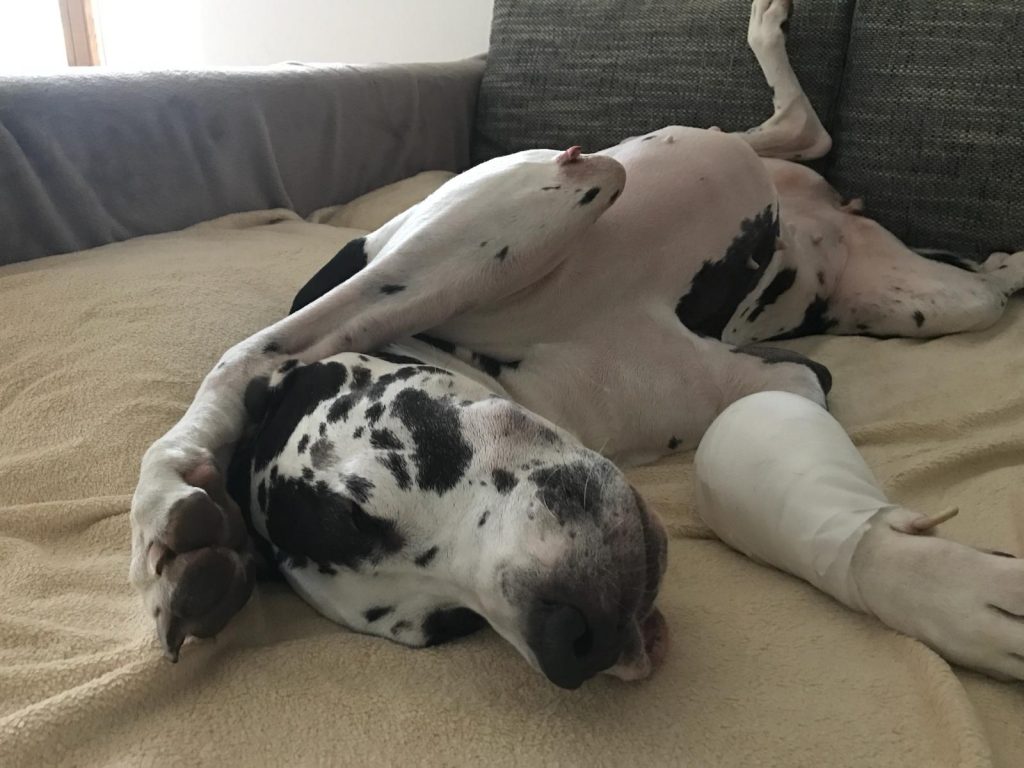
At the end the tumor had the size of a tennis ball. More and more blood and wound secretion extravasated and it smelled like rotten tissue. In this stadium we decided to let her go. We wanted to spare her from her leg breaking which would have happened soon. So at the 6.2.2018 our vet euthanized her at our home.
A report by Sandra Warzecha
